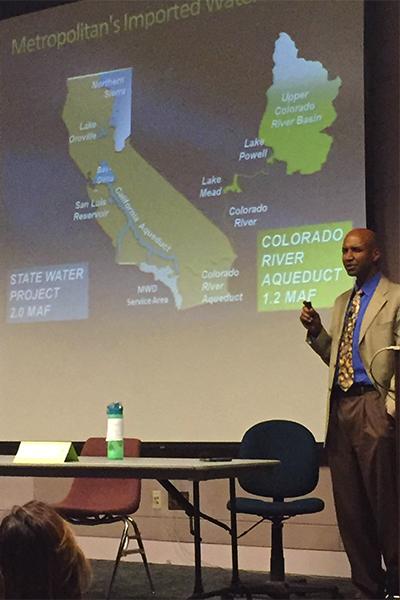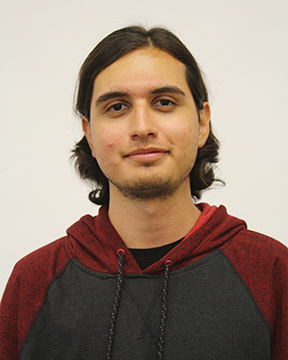The California drought is in its fourth year, and it may not go away anytime soon.
ASCC Go Green hosted a day-long event to spread the word on the current environmental status.
The event named “Green Fest” offered many different forms of environmental information with a SoCal Water Lecture in the Teleconference Center at 2 p.m.
The Teleconference Center was about 80 percent full with Dr. Adrian Hightower, who works for The Metropolitan Water District of Southern California, speaking about the current status of the California drought and the state’s record-breaking impact on the drought.
Hightower began the lecture with a review of where the state gets its water and about the aqueducts California uses.
“One aqueduct is up north in San Francisco, and the other is in Colorado. We share the Colorado one with seven other states and Mexico,” Hightower said.
He continued by going through a list of record-breaking occurrences over the past few years that helped increase the serious drought.
There were several graphs and charts showing the causes of the drought.
California suffered the driest month in January with snow pack on record, while runoff is below average, and has been that way since 2012.
“With no snow, there is no water to go down the aqueduct,” Hightower said.
Last year brought the highest temperatures in California’s history.
He continued by explaining several maps containing yellow and red showing the impact of the drought, with the extreme and severe drought categories covering the entire state in California.
After students and staff received a wake-up call about the drought, the lecture switched gears and went on to the upcoming El Niño.
Hightower explained that despite the possibility of a “wet” California, the thought of the drought going away immediately is unlikely.
He continued by discussing how Australia recently came out of its 15 year drought and how it went through major changes about its water system before it got out of a drought.
Questions were taken during the end of the lecture with Hightower answering them all with ease and to the best of his knowledge.
Questions about the effects of having water bottles and drinking tap water were answered.
“The Go Green club set up hydration stations so students won’t have to use water bottles,” Earth Science professor Aline Gregorio said.
The meeting concluded with Hightower offering a grant program to the audience interested in certain sciences.
“Hope for the best, plan for the worse,” Hightower said.










